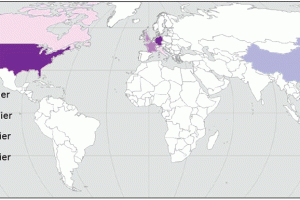More than one A/E has been in the uncomfortable position of having a structure that he or she designed fail an inspection due to a code-related design defect. The immediate reaction, in printable form, is often “How were the plans approved if they didn’t comply with the building code? That’s negligence on the part of the building department.” While this reaction is understandable, it doesn’t provide much support for the A/E when explaining the situation to the owner. …
Review Category : Legal Perspectives
The more than three decades that have passed since the collapse of hanging walkways at Kansas City’s Hyatt Regency Hotel have turned that catastrophe into the textbook cautionary tale for structural engineers. No other collapse (save maybe the World Trade Center) has led me to as many discussions within and out of the profession. …
To many A/Es, the words “building code” have a distinctly negative connotation. This is not entirely surprising – the words often come up in the context of an obscure requirement that no one can explain. Or even worse, two obscure requirements that appear to contradict each other. Nevertheless, being able to design to the applicable building code is a non-negotiable element of an A/E’s work. …
What makes it Good and Valuable?
From time to time, an A/E may be presented with a contract that starts off with the phrase “For good and valuable consideration, the parties do hereby covenant…” Alternatively, the consideration may be described as “mutually-agreed upon.” This begs the question – what is consideration? And what makes it good and valuable? …
Excess Versus Umbrella Insurance
Although the terms “excess insurance” and “umbrella insurance” are often used interchangeably, an excess insurance policy is not the same as an umbrella insurance policy. Both policies provide liability coverage, i.e. coverage that protects against claims of damage or injury to others or their property. …
Disputes over payment are seldom pleasant. They can be particularly unpleasant when a client claims that the work was in some way deficient or less than what was required by its contract, and refuses to pay the full amount of the contract. If the amount in question is large and the claim is unjustified, it may be worth taking legal action. Unless the client can prove that the work was less than what was contracted for, refusal to pay the contract price constitutes a material breach of contract. …
You wouldn’t go to your dentist for oral surgery without asking exactly what procedures he or she will be performing and what it will cost, would you? Unfortunately,, this is exactly the trap that many architectural and engineering consultants fall into – neglecting to provide a specific list of services that they will perform as part of their contract. …
Analyzing the economic strength, patent systems, and structural engineering traditions of nations offers one way to evaluate major players in patented structural engineering innovation. In general, the leading nations for patented structural engineering innovation possess relatively strong economies, rich civil engineering traditions, and strong patent systems. The United States, Germany, Japan, South Korea, the United Kingdom, France, China, Italy, Canada, and Australia rank atop the list of patenting nations for civil and structural engineering innovation. …
This article is currently only available in PDF format, please click the link to the top right.



